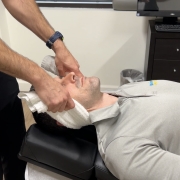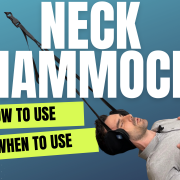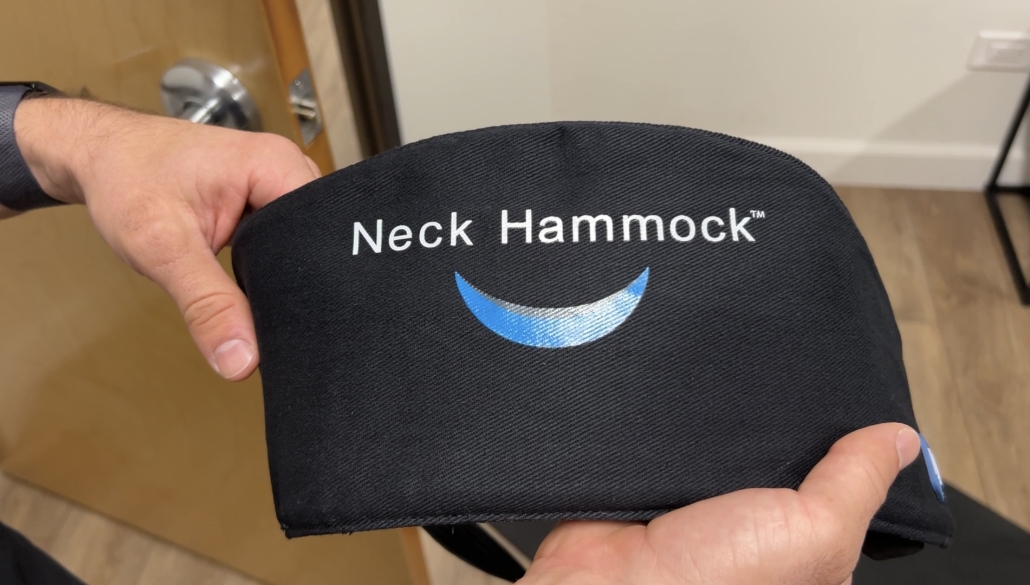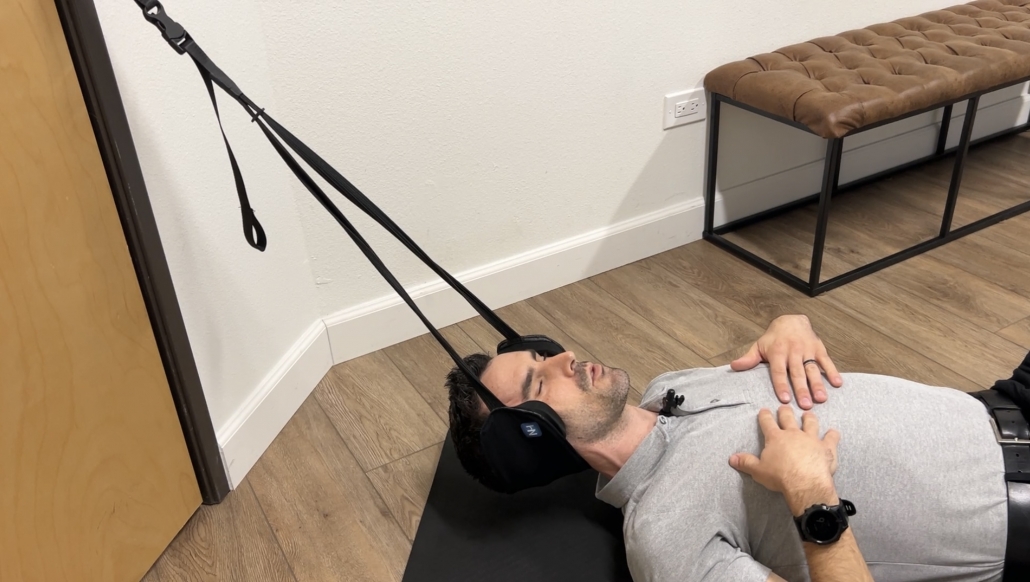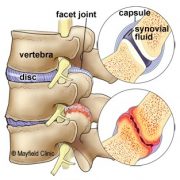Towel Traction with Partner: A Guide to Relieve Neck Pain
Introduction
Neck pain is a common discomfort that can be caused by various factors such as repetitive postural strain, muscle tension, or injuries. One effective method to alleviate neck pain is through towel traction, a simple and gentle technique that can be done with the help of a partner. If you do not have a partner readily available, check out our post on the neck hammock which is a device that does not require help. In this blog, we will provide a step-by-step guide on how to use partner towel traction to relieve neck pain. Also check out our YouTube video below which shows a quick demonstration on how to perform towel traction for neck pain.
Step 1: Gather the necessary equipment for towel traction
To perform partner towel traction for neck pain, you will need a few basic items:
Towel: Choose a towel that is long enough to cover the back of your neck comfortably; we usually use a hand towel size or similar.
Partner: Find a willing partner who can assist you in performing the traction.
Comfortable surface: Choose a flat, supporting surface. We find a bed with your head as close to the edge as possible works well for both your comfort and the comfort of your partner.
Step 2: Lie down in a comfortable position
Lie down on the comfortable surface with your neck supported and whole body relaxed.
Step 3: Fold the towel
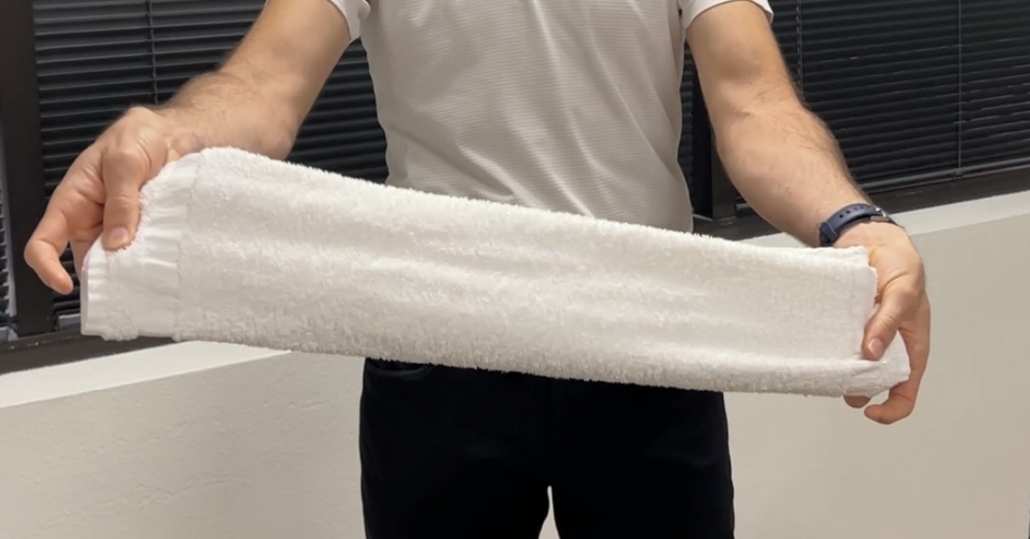
Fold the towel lengthwise into a long strip that is wide enough to comfortably fit around the back of your neck.
Step 4: Place the towel around your neck
Have your partner gently place the folded towel around the back of your neck, making sure it is centered and positioned at the base of your skull.
Step 5: Partner gently pulls on the towel
Instruct your partner to hold the ends of the towel and gently pull the towel first up into the base of the skull (without lifting the head) then apply a gentle traction force. The traction force should be firm enough to create a stretch in your neck muscles, but not too intense to cause pain or discomfort. You should feel a gentle stretch in the muscles at the back of your neck. If you get pain in the neck or pain, tingling or numbness that radiates STOP.
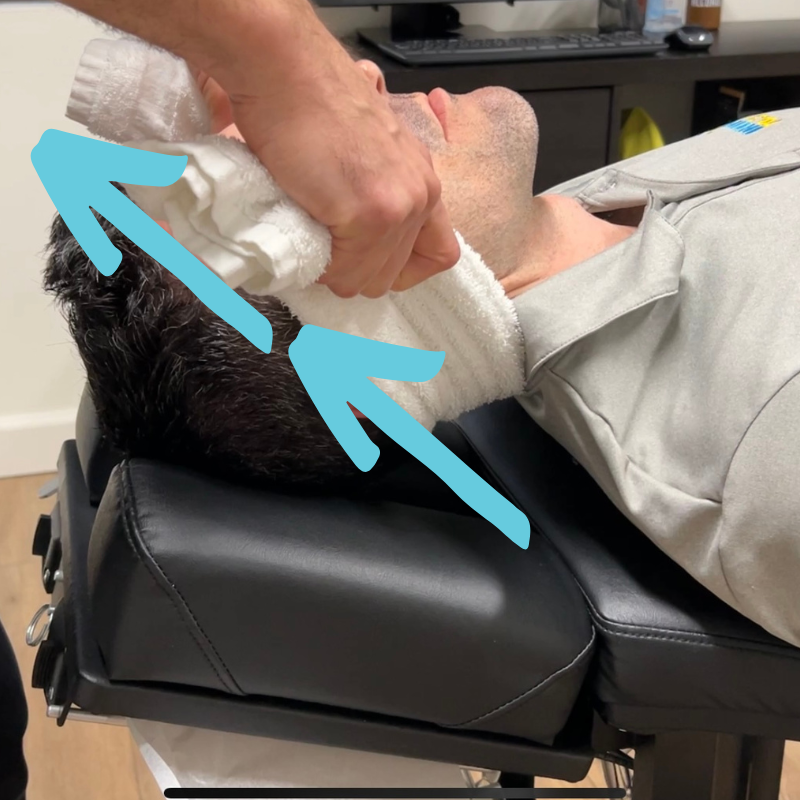
Step 6: Hold for 10 seconds
Hold the traction for 10 seconds, allowing your neck muscles to relax and stretch. Breathe deeply and try to fully relax your neck and shoulders during this time.
Step 7: Release the towel traction
Instruct your partner to release the traction slowly and gently. A common pitfall is that the partner will release the stretch too quickly which can cause pain. Take your time and release slowly!
Step 8: Repeat step #5-7 at least 10 times
Step 9: Rest and relax
Take a few deep breaths and rest for a few minutes after the traction. Gently move your neck from side to side or do some gentle neck stretches to further promote relaxation.
This can be performed 1-2 times per day as needed.
Partner towel traction can be a simple and effective technique to relieve neck pain and promote neck relaxation. Perform this technique with a willing partner who can apply gentle traction as tolerated. Communication is important during the entire process. It is recommended to consult with a healthcare professional before attempting partner towel traction. With proper guidance and practice, partner towel traction can be a valuable tool in self management of neck pain.

